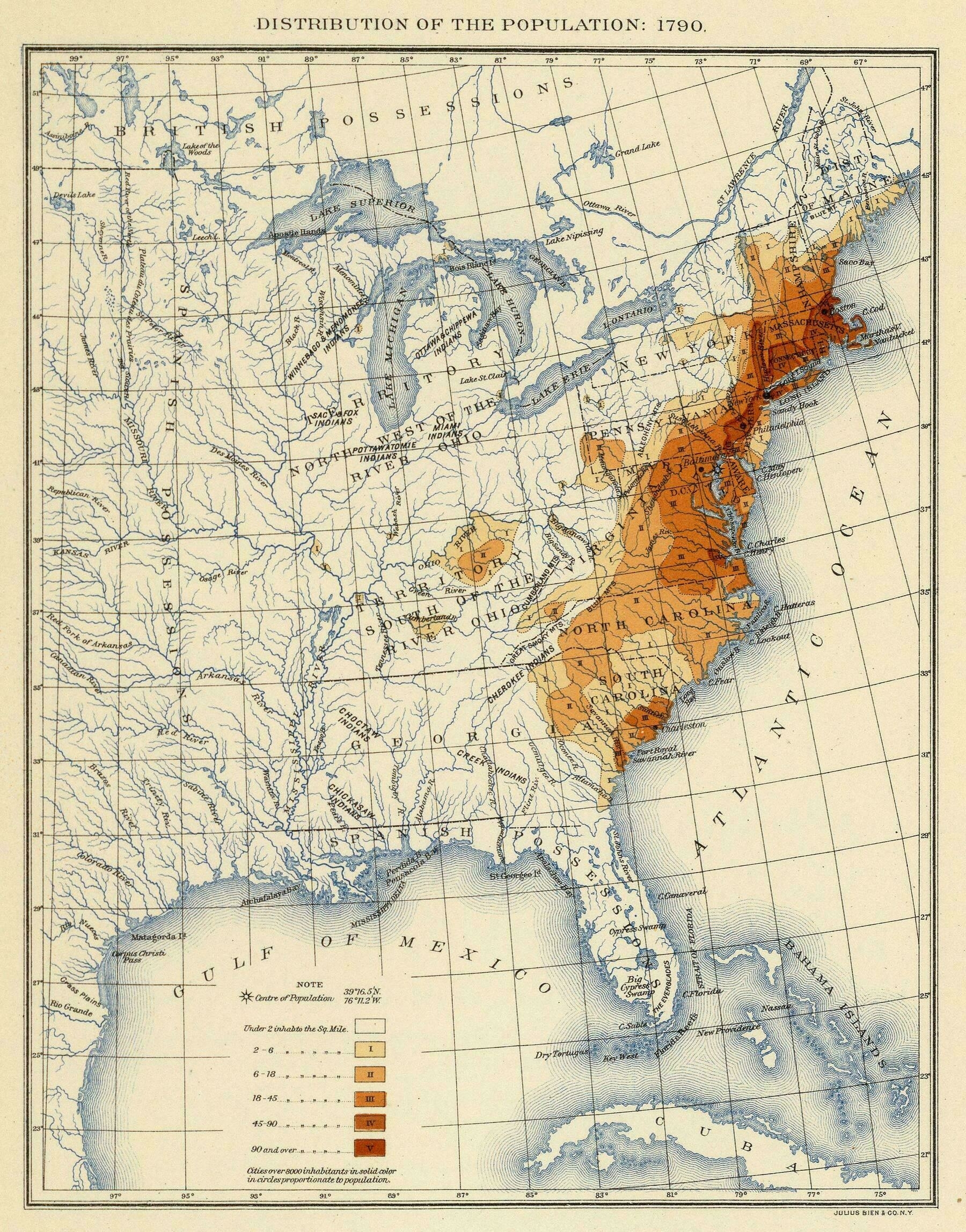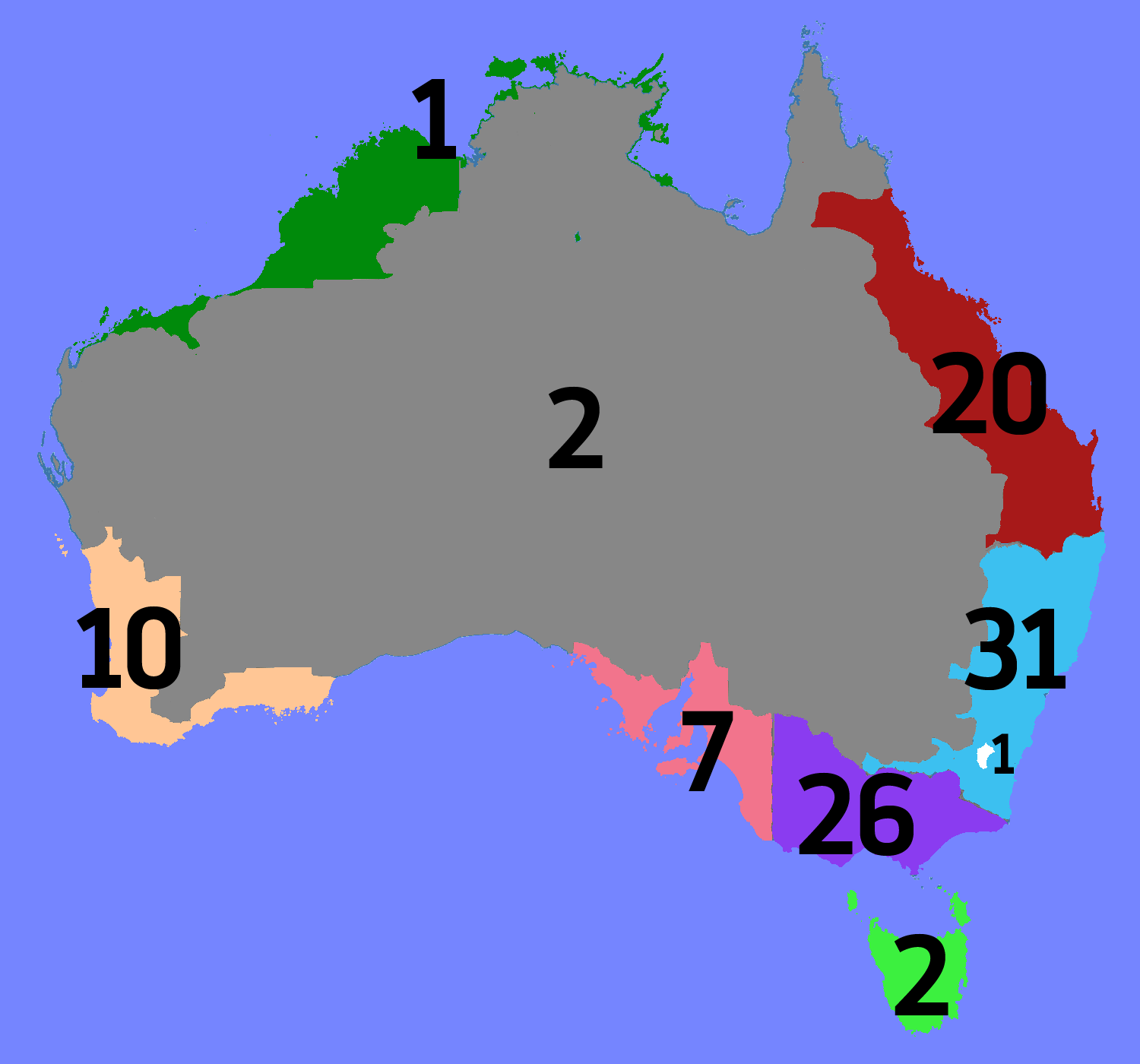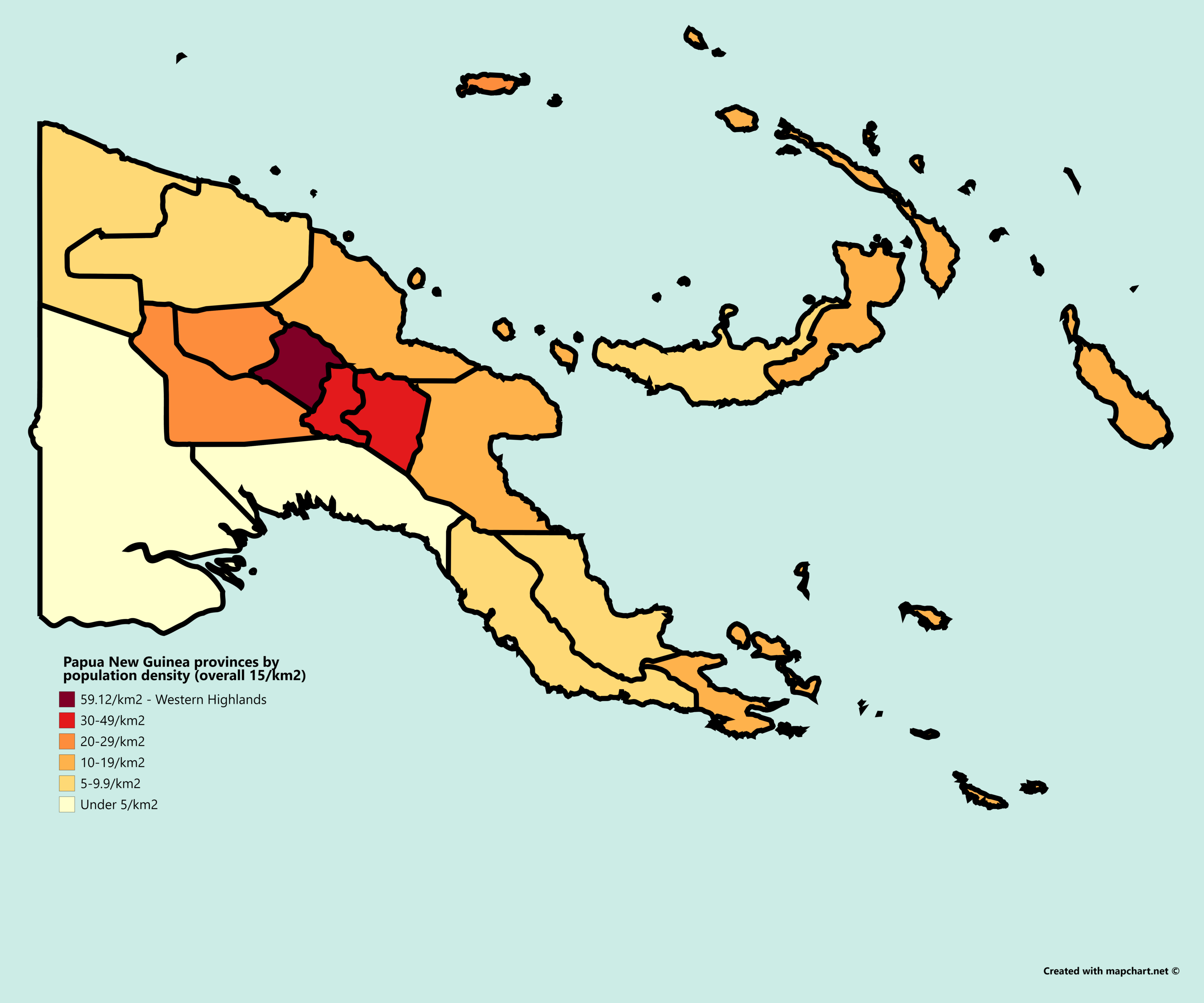Illinois population density (2020)
Illinois population density (2020)

‘Anything other than blue = corn/soybean, every last acre. Illinois is an agricultural powerhouse as well as having the 3rd largest city/metro with nearly 10 million people’

Illinois population density (2020)

‘Anything other than blue = corn/soybean, every last acre. Illinois is an agricultural powerhouse as well as having the 3rd largest city/metro with nearly 10 million people’
Population density map of the United States in 1790 (published 1903)

‘White is the populated parts, but not by them
I’m sure I already know the answer to this, but I wonder if the map makers gave any consideration to areas with larger populations that they knew about, and just decided that the the “under 2 per sq mi” still applied in those cases.
Again, I’m thinking I know the answer already. Being generous maybe in “the population” at the top, the means our’
Michigan population density (2020)

‘Upper Peninsula has very few people
Not a good deal to exchange Toledo Strip for the Upper Peninsula
Except for all the Iron, Copper, and timber’
Population density of U.S. counties

“And yet most of those ‘dense’ counties are mostly suburban sprawl”
Population map of Australia - from the 1921 census

“That big ol 0 in the middle
Took the government until 1967 to count Aboriginal people in the Census. That was required after a referendum.
Even then the authorities were obsessed about the proportion of “aboriginal blood” in someone identifying themselves as aboriginal. It took until 1976 before we see a Census question acceptable to modern eyes.
Then took the Australian Bureau of Statistics until 2006 to stop saying the population of Australia in 1788 was the size of the First Fleet*. Even in the latest issue there’s references to “population” in the Explanatory Notes to publication 3105.0.65.00-2016 which can only mean “non-Aboriginal population” as the sentence makes no sense if “population” also includes Aboriginals.
Paraguay Population Cartogram

‘I always wonder what is up with these south-american countries like Paraguay, Uruguay, Chile and Argentina. We arent educated about their history here and there are never any news about them either. What’s life like there? Is there as much social and national tension as in Europe? Do they wage any wars, do they migrate anywhere? Do they care about the rest of the world at all? Im just completely clueless, I do hear some stuff about Brasil, Venezuela and Columbia, but the rest are just blind spots in my knowledge
Born and raised in Chile until adulthood. Pretty mellow country, it used to be quite culturally homogeneous.
These days there’s been a massive influx of immigrants, chiefly Colombia, Venezuela, Haiti and Perú. Useless current president soon to be replaced by a dude who’s literally half his age, and cradle of the neoliberal model.
Just ask replying to this comment and I’ll happily reply ;)
Ok, my main question would be how much are these countries affected by the rest of the world? I mean here in the EU, we are obviously connected in a level to eachother, are dependant on the policies and happenings of Asia, the middle-east, the US and somewhat Africa. On what scale something like this applies to south-america? Do you care what’s up outside the continent?
In general, whatever happens outside of the Americas, China and the EU doesn’t affect South American countries that much.
In those regions it highly depends on the country. The South American market is oriented towards the export of raw materials, whether it’s Brazilian coffee, Ecuadorian oil, Chilean copper or Argentinian grain and beef.
Biggest commercial partners vary widely, though most of the region’s main customer is China. Politically, though, most countries prefer to align themselves with the US/EU, and the richer countries, like Chile and Brazil, get most if not all their imported military hardware from those countries, but will gladly accept Israeli and Swedish weapons too.
Regional interdependency is quite significant too, particularly in times of crisis. During the Falklands’ War, for instance, Perú sold Mirage planes to Argentina basically at cost, and most other countries offered solidarity ro different degrees - except for Chile, with which a war wasiterally avoided on the 11th hour four years before. Chile supported the UK, partly due to historic ties, but also due to natural convenience. Venezuelan migrants have mainly relocated in Colombia, Chile and Argentina, in the first case because it’s the easiest country to get to for them, on the latter due to more political stability, and greater economic opportunities. On merrier terms, most countries have commercial agreements to limit tariffs amongst them, and by and large traffic of goods and services is quite fluid. LATAM, for instance, the largest airline south of Rio Grande, is the result of the fusion of LAN, Chile’s former flag carrier, and TAM, Brazil’s largest domestic carrier. Today it stands as the flag carrier of Brazil and Chile, headquartered in the latter, and it generally dominates traffic in the region. It’s also one of the few airlines to fly to pretty much all around the globe.
Moreover, depending on the country, cultural and social links are more stressed. Argentina, for instance, had a huge French cultural influence among its aristocracy a hundred years back (and on its military as well), and Italian influence for the poorer folk. The aristocracy, however, remained of strictly Castilian origin.
In Chile’s case, however, foreign influence was more confined: I ntellectuals were inspired by France, the army by Germany, and the Navy by the UK. The traditional landowning aristocracy was, on the other hand, of proud Basque heritage. Given these “cultural enclaves”, us Chileans, and Argentinians, have strangely distinct culinary traditions, when compared to our neighbors. Chile is Latin America’s largest tea drinker, and the consumption of German-influenced sandwiches, meats and pies is quite noticeable. Argentinians on the other hand have a strong pasta culture, and croissants (known locally as medialunas, half-moons) are on every corner bakery’
Nicaragua population density (1973), ethnic composition and size comparison to U.S. states

‘Why are the eastern parts so sparsely populated?
he soil isn’t very good in most of the eastern parts’
Population density of Australian state and territories (2021)

‘No existing road projects will ever fix Melbourne road traffic congestions. There needs to be a standard in travel and working from home to counter measure the issues’
Swiss population density grid by hectare

‘I didn’t realize how heavily weighted the population was to the French and German sides of the country’
If 100 people lived in Australia, where would they live?

‘I’ve always thought i should move to Darwin. Fuck all people but still has anything needed
Heh, you’re bound to be disappointed. There’s people here. Darwin’s definitely the place to live. Amazing relaxed multicultural lifestyle, artistic community, festivals, music, sports, the lot. Wouldn’t live anywhere else… I’ve tried’
Population density map of Taiwan (2019)

‘What’s the reason for this disproportion?
Eastern part of Taiwan is mountainous
it’s also more prone to natural disasters’
Population density of South Australia (2018)

‘Coober pedy has a significant population which don’t show up on this map, since they were underground when the prospectus was taken’
Population density of Brazil by municipality (2020)

‘Brazil population tends to be C O A S T A L’
Papua New Guinea provinces by population density (2011 census)

‘expected more people on the coast
Nope. It is hot near Equator. Full of mosquito,malaria and wild animals.
The highland is calmer and can be used for forest farming, hence more people’
Jordan population and rainfall distribution (2004)

‘Jordan has the lowest point on earth in its borders’
Population density by electoral division in Australia

‘Why does noone live in Northern Australia? Seem like a great place to do business with Asia…
It’s a lot of jungle and desert, really unsuited to the sort of agriculture the European colonists were used to. With all the floods infrastructure was a mongrel to establish too.
The White Australia Policy established in 1901 also banned employers from bringing in non-white seasonal workers, which kind of killed it.’
Population density of Melbourne and surrounding areas (2012)

‘Hm. It looks like not many people live in the sea’–ennuinerdog